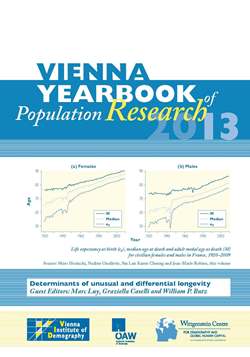
Vienna Yearbook of Population Research 2013, pp. 37-69, 2024/12/12

This paper examines and demonstrates the importance of the adult modal age at death (M) in longevity research. Unlike life expectancy at birth (e0) and median age at death, M is determined solely by old-age mortality as far as mortality follows a bathtub curve. It represents the location of old-age death heap in the age distribution of deaths, and captures mortality shifts more accurately than conditional life expectancies such as e65. Although M may not be directly determined from erratic mortality data, a recently developed method for deriving M from the P-spline-smoothed mortality curve based on penalised Poisson likelihood is highly effective in estimating M. Patterns of trends and differentials in M can be noticeably different from those in other lifespan measures, as indicated in some examples. In addition, major mathematical models of adult mortality such as the Gompertz, logistic and Weibull models can be reformulated using M, which plays a critical role as the mortality level parameter in those models.
Keywords: Mortality; Mortal Age; Lifespan; Demography